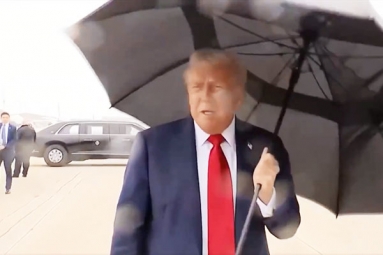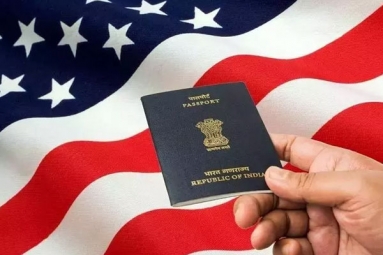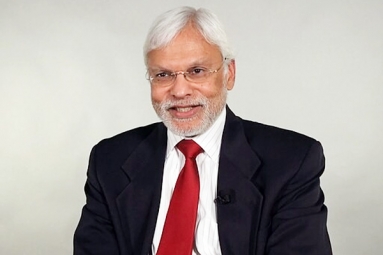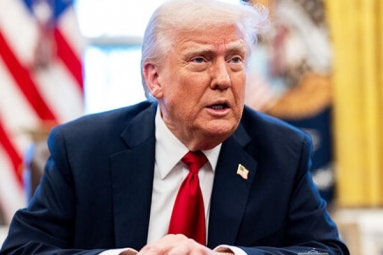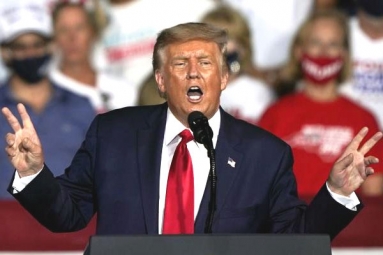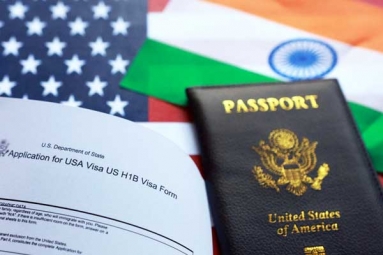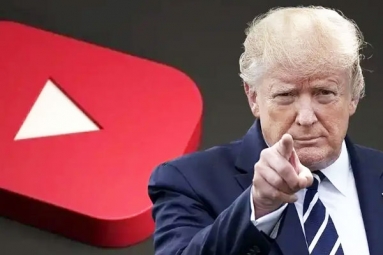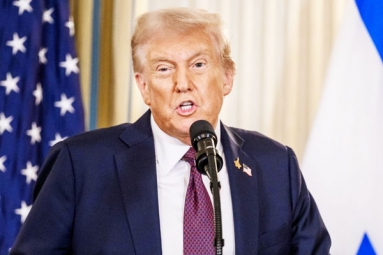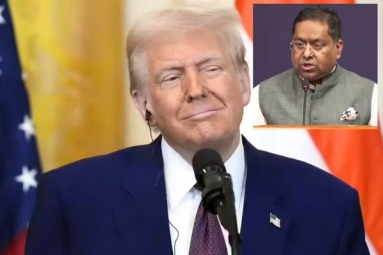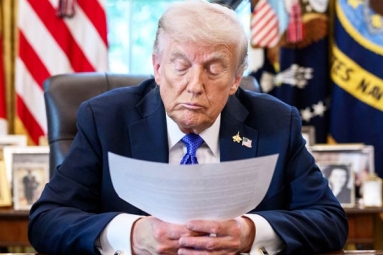
(Image source from: PTI)
The significant increase in tariffs announced by US President Donald Trump on goods coming from India has unsettled the country’s stock markets and brought exporters together for discussions. Analysts believe this decision will have a large effect on India’s economic growth in the near future. However, since many view the announcement as a new bargaining strategy from the US, there is hope that some agreement will be found between the two nations before the new "punishment" takes effect in less than three weeks. Following several threats, Trump put his signature on an executive order on August 7, adding a 25 percent “ad valorem” tax on Indian imports going to the US, raising the total tariffs on Indian products to 50 percent. This extra tax is a “penalty” due to India’s heavy reliance on Russian oil, with whom the US is at odds due to the ongoing conflict with Ukraine that started in February 2022. Previously, Trump had declared a 25 percent “reciprocal tariff” on India, effective from August 7, claiming it was aimed at reducing the large trade gap the US has with India. According to the order, the new added tax of 25 percent will start on August 25.
In the fiscal year 2024, India exported goods worth $77.5 billion (Rs 6.79 lakh crore) to the US and imported $42.2 billion (Rs 3.7 lakh crore) in goods from the US, leading to a trade surplus of $35.3 billion (Rs 3.09 lakh crore) for India. The Indian industry had hoped that even the 25 percent reciprocal tariff would be lessened by the US as part of a trade deal both nations are currently negotiating, but the additional tariff has dealt a serious blow and increased uncertainty among exporters. A report from Goldman Sachs indicated they expect the overall effective tariff on Indian goods coming into the US will be about 32 percent after applying all exemptions. In reaction to the US announcement, India’s foreign affairs ministry stated that the Indian government “will take all necessary actions to defend its national interests,” showing it is not inclined to yield to pressure from Trump.
India has consistently argued that its crude oil purchases from Russia are in its “national interest.” Despite being at the center of global political tension since 2022, Russia has managed to withstand the financial sanctions imposed by the US and has become a major oil supplier to two of the world’s largest economies—China and India.
Interestingly, China purchases more oil from Russia compared to India and previously had a fierce tariff dispute with the US. However, China faces a lower tariff of 30 percent than India. Russia managed to offer crude oil to India at reduced prices when global prices were high. Consequently, it is not surprising that India, which relies on imports for 80 percent of its crude oil needs, sourced 35.8 percent of its crude from Russia in the fiscal year 2025. Other significant suppliers included Iraq with 19.9 percent, Saudi Arabia with 13.6 percent, the UAE providing 9 percent, and the US at 4.3 percent. Trump's stance seemed to prompt India to buy more oil from the US. In April and May 2025, the US comprised 8 percent (on average) of India's crude oil purchases. In fiscal year 2025, India's total oil import expenditure reached $143 billion (equivalent to Rs 12.5 lakh crore), with crude oil imports totaling 244 million tonnes at an average rate of $586 (approximately Rs 51,500) per tonne.
The tariffs introduced by Trump will affect economic growth. Goldman Sachs had previously predicted that the 25 percent tariff could directly influence India’s real Gross Domestic Product (GDP) by about 0.3 percent on an annual basis. Should the US implement an extra 25 percent tariff, the total effect on GDP would be estimated at 0.6 percent. The firm noted, “This estimate is based on India’s goods exports related to about 4 percent of GDP towards US final demand and a goods export demand sensitivity of close to 0.5.” As anticipated, the new tariffs have unsettled the Indian stock markets. On August 7, the BSE Sensex dropped by 527 points during trading, while the NSE Nifty decreased by 170 points. A research note from Motilal Oswal Financial Services stated, “Ongoing selling by foreign institutional investors, combined with rising trade tensions between the US and India, is expected to negatively influence market sentiment. The increased tariffs are likely to have a detrimental effect on significant export-driven sectors such as textiles, leather, gems and jewelry, automotive parts, pharmaceuticals, chemicals, and steel.”




